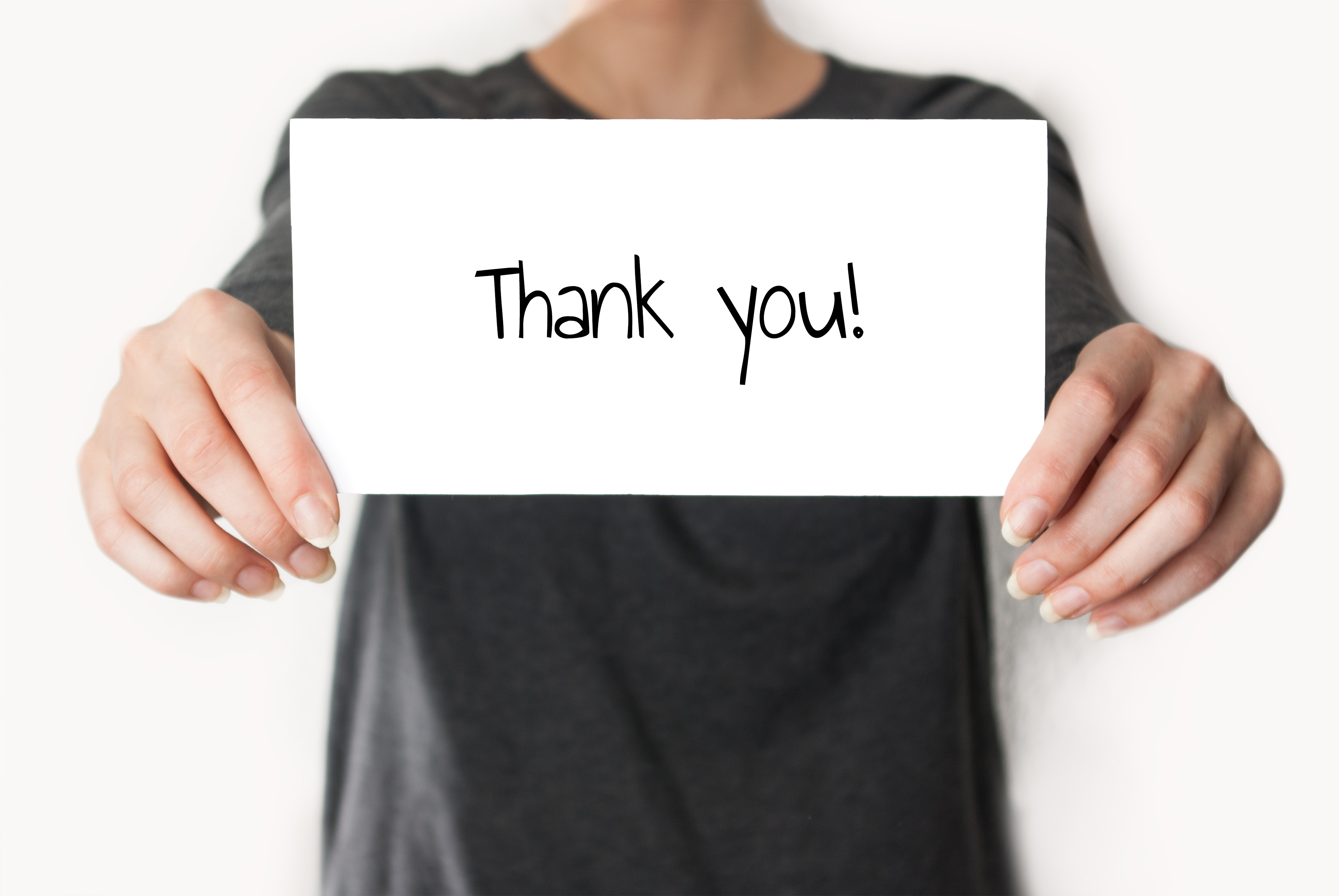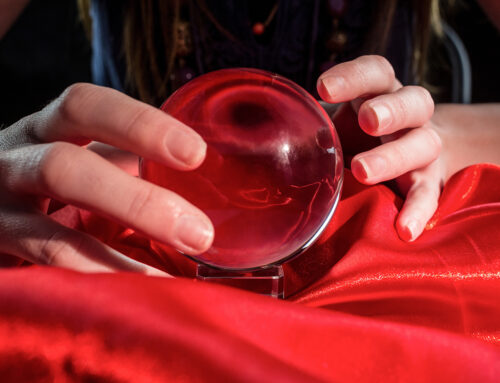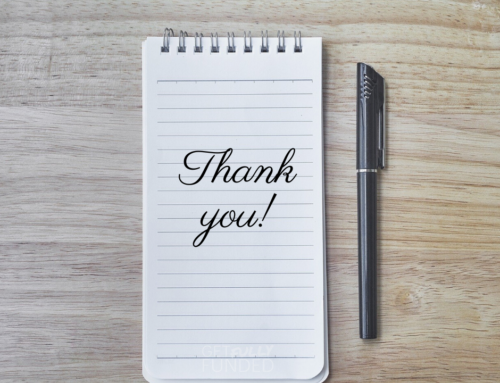 There are two parts to thanking donors when they make a donation:
There are two parts to thanking donors when they make a donation:
Connecting with the donor’s brain by providing a gift receipt.
and more importantly…
Touching the donor’s heart by letting them know they’re heroes for giving to your organization’s cause.
You make the brain connection when you give them the receipt with the data they need for their records, spell their name correctly, and thank them promptly.
But there is so much more to properly thanking donors.
To touch their hearts, you have to make them feel fantastic about giving to your organization.
To do that, you have to connect with them emotionally through a story, a photo, and hero language that makes them feel special and important – like they personally stepped in and made a difference through their gift (which they did!).
The good news is a perfect thank-you letter does both – it connects with a donor’s brain and their heart.
Unfortunately, most nonprofits thank their donors as an afterthought and fail to make it top priority.
They’re so focused on the money that they forget about the person giving that money, and don’t do a good job of thanking the donor or giving them a good experience.
But you’re here reading this, so you’re smarter than them!
It’s not that hard to thank a donor well.
After thanking thousands of people over many years, I can tell you with full confidence that there are a handful of things you must do to get it right.
In fact, here’s my list of 7 ‘must do’s’ when thanking donors, so the donor feels warm and fuzzy about the donation they just made and is receptive to giving the next time you ask.
7 Must Do’s When Thanking Donors
1. Take your time. Crafting a thank-you letter isn’t just a task on your to-do list that you mark off as fast as you can.
Writing a meaningful thank-you note that will touch the donor’s heart takes time and thoughtfulness.
As a general rule, spend at least as much time writing the thank-you letter as you do writing the Ask.
Your goal should be to write a power-packed thank-you letter that makes the donor think, “I love this nonprofit! They do such good work.”
If you’re not sure what to say, click here for a list of sample phrases you can use to thank donors.
You can also try using AI (artificial intelligence) with a prompt like, “I’m a nonprofit development director who would like to send a donor a thank-you letter for their donation. Draft a thank-you letter then emphasizes my nonprofit’s gratitude for their gift.” This will give you a good starting place!
To hit the ball out of the park with your thank-you letter, you need the right story – a story that captures your organization’s work beautifully and demonstrates how special and important your work is.
This story should be short and to the point.
Here is an example:
We recently met Serena, a mother of three who works in childcare.
She had been saving for months to move from a motel to an apartment, but she was a few hundred dollars short.
Thanks to generous supporters like you, we were able to move Serena and her children into an apartment, provide furnishings in partnership with our local furniture bank, and enroll her in a certification program so she can increase her income.
“I feel so safe and positive about my future now that we are out of that motel,” she told us.
“I feel like a good mother for the first time in a long time.”
Work with your staff and volunteers who work directly with the people you serve to capture stories like this one for sharing in thank-you notes.
People who receive services often send texts, emails, or Facebook messages expressing appreciation, and you can capture their essence to show donors how their support is changing lives.
By the way, you don’t need to dive into details or emphasize the tragedy and past trauma of the people you work with. Just focus on the unique ways your organization uplifts people or animals from where they are and how donors make that possible.
 2. Send your thank-you quickly. Your email thank-you should arrive immediately after a donation is made online.
2. Send your thank-you quickly. Your email thank-you should arrive immediately after a donation is made online.
You can automate this with your online donor management system.
If yours is a young organization and still uses a spreadsheet as a donor tracker, consider getting started with a low-cost donor management system now.
Until then, make it a habit to send thank-you notes daily as part of your routine. Yes, daily!
Send thank-you letters immediately after depositing the donor’s check. Simply make it part of your process for thanking donors.
Donors lose trust in your organization when they only hear crickets after sending a gift.
They wonder if you even received their check, and if you are aware of who gave it.
And they wonder if you have your act together.
In short, your slow response time in thanking them may make them decide not to give again.
To ensure quick turnaround times, write a fresh thank-you letter at the beginning of each month so it’s ready to go.
Also craft a new thank-you letter as part of any campaign or special fundraiser.
If you wait until it’s time to send the thank-you before you actually write the thank-you letter, you may rush the process and send out something that isn’t meaningful.
The point here is to prioritize thanking donors.
There’s nothing more important you can do than thank a donor.
Full. Stop.
3. Personalize your thank-you. Address your donor by name when you thank them. This is NOT the place to use ‘Dear friend.’
There is actually NEVER a good time to use Dear friend that I can think of, but definitely don’t do it here!
Your donor software should allow you to insert the donor’s first name into the salutation of the thank-you, for both emails and letters.
Sending something generic (like Dear friend) tells the donor you don’t really care about them, just their money.
You can personalize printed thank-you letters by handwriting a note at the bottom. This is really important if you know the donor because it shows them you’re paying attention and noticed their donation.
If you don’t know the donor, look them up in your donor management system to see if they have given before.
If they have, thank them for their loyalty and commitment to the cause.
If they haven’t, welcome them to your organization and thank them for caring about the people or animals you support.
If they’re involved with your nonprofit, definitely thank them for both their donation and their service with something like, “Thank you, Jane, for always giving and for serving on the gala committee. You’re so important to our organization’s work!”
4. Write with warmth and sincerity. Your thank-you letter should touch the reader’s heart, not sound like an academic paper.
So, write like you talk.
Leave out the jargon, acronyms, and slang because most donors won’t understand your insider language and will stop reading.
Try using my Kitchen Table Exercise to develop your conversational writing voice.
Here’s how it works. Imagine you’re sitting at your kitchen table with your donor. How would you say thank you? Write that.
You wouldn’t say, “On behalf of the Board and staff, please accept our deepest gratitude blah blah blah…”
You would say, “I really can’t thank you enough…”
Create a warm brand for your organization, one that speaks directly to donors in an open manner – treating them as the valuable partners that they are.
“Our families have gone through a lot this past year and a half, but generous people like you remind them that they aren’t alone in their struggles and that someone cares about them.”
Another example:
“Our food pantry has more people seeking our help than ever before, and it’s a struggle to keep food on the shelves. Your donation makes it possible for us to provide food for more people. With your gift, we can buy the items we always seem to be running out of, like shelf-stable milk, peanut butter, and hygiene items.”
 5. Write with meaning. Giving a gift to a nonprofit organization as a way of helping others is a meaningful act for the donor.
5. Write with meaning. Giving a gift to a nonprofit organization as a way of helping others is a meaningful act for the donor.
Infuse your letter with language that acknowledges this meaning. Otherwise, the donation will feel like a transaction.
To infuse meaning, use heartfelt statements, such as:
“Your donation gives a Haitian child the opportunity to enroll in school, something both they and their parents have only dreamed of for a long time but thought was out of reach.”
Don’t exaggerate your organization’s work or the donor’s role.
For example: “Your gift is the difference between life and death for the children of Haiti.”
This is unnecessary, and your donor will recognize it as over-statement.
Instead share the true situation of the people or families you serve and how the donor’s contribution will make a difference.
This: “We have 34 children on our waiting list, eager to enroll in school. Your gift can get a child back into the classroom where they belong and on the road to a brighter future.”
Or: “We know that dogs that are nervous and miserable in a shelter setting usually thrive in foster homes, growing into happy pets that can be adopted into loving, permanent homes. With your gift, we can place more dogs in foster homes and ultimately get more pets into permanent homes.”
Or: “The men at our shelter have many needs and some are beyond what our small organization can provide. But we can give them a safe place to sleep, a hot meal, a hot shower, and a pair of socks and underwear. Your gift makes it possible for men to receive these basic needs and to know that someone cares about them.”
Notice that all these examples contain hero language that’s meant to help the donor feel really good about the donation they just made.
6. Provide specifics. Make sure your thank-you note also serves as a donation receipt and gives all the practical information the donor needs including the amount of the gift, the gift date, and the reason for the gift.
Provide a sentence stating that ‘no goods or services were received in exchange for the gift,’ if that was the case.
Consider highlighting this nuts-and-bolts information by bolding, underlining, or offsetting it in a box, so the donor can find the information quickly if needed for tax purposes.
But save these donation details for the end of the letter.
At the start, when you still have the donor’s attention, share your most meaningful story.
Some people like to send a nuts-and-bolts letter with tax information and then a separate, warmly written thank-you note.
I don’t like this approach.
It creates two pieces of mail or email for the donor to open and read.
It’s confusing, and it’s too much for donors who all lead busy lives – which is all donors.
Stick to one well-written thank you note focused on the meaningful, sincere language that cuts to the donor’s heart and includes the required tax information in a clear, concise manner.
7. Invite questions. Provide the name and contact information for the person the donor should contact should they have any questions.
Most donors won’t make contact, but it builds trust and strengthens your relationship with the donor to let them know you are open to answer any questions they might have.
And make sure that the email you give out is monitored.
Next-Level Ideas for Thanking Donors

A well-written thank-you letter will put the wheels in motion for continued donor support.
But that’s just the beginning.
There are additional strategies you can use for thanking donors to make sure your donor feels appreciated and needed.
If you want to really nail this, create a Donor Acknowledgement Plan so you’re ready for thanking donors at different levels in meaningful ways.
Here are three more ideas to get you started:
The Bottom Line
 Thanking donors is not an after-thought.
Thanking donors is not an after-thought.
It’s a critical step in the stewarding process that positions your organization to continue to be a priority for your donors.
Thank every donor upon receipt of a gift of any amount with a letter strategically written to appeal to the donor’s heart and mind.
Then, continue to thank donors with personalized videos and phone calls.
This is how you build relationships with donors and increase loyalty.
And remember – loyal donors will give in higher amounts and tell others about your organization’s work which in turn brings in more donors, helping you do more good, serve more people, help more animals, and accomplish more for the greater good.






Thanks Sandy Rees madam
Thank you for these wonderful tips. We really need to make an effort when thanking the donors.
It was a good initiative from your side. Thanks for sharing the valuable tips.
In the way of personalizing, the donors will appreciate your effort and that’s a good thing to build bonds or relationships.
You’re so right!
Just finding this info. Great ideas! We are going to incorporate a thank you video in our e-receipts and plan to change them up monthly.
I think you’ll be really pleased at the feedback you’ll get.
Hello! Thanks for this helpful article. I’m going to ask a question I believe I already know the answer to, but I’ll ask anyhow. With these thank you notes, do you include a web address or mention of “donating” or this is strictly a thank you?
Keep your thank you letters and notes focused on thanking the donor. It’s meant to make the donor feel good and the minute you add a donate button, it becomes another Ask. Your donor can feel like every time they hear from you, you have your hand out, which feels pretty yucky.